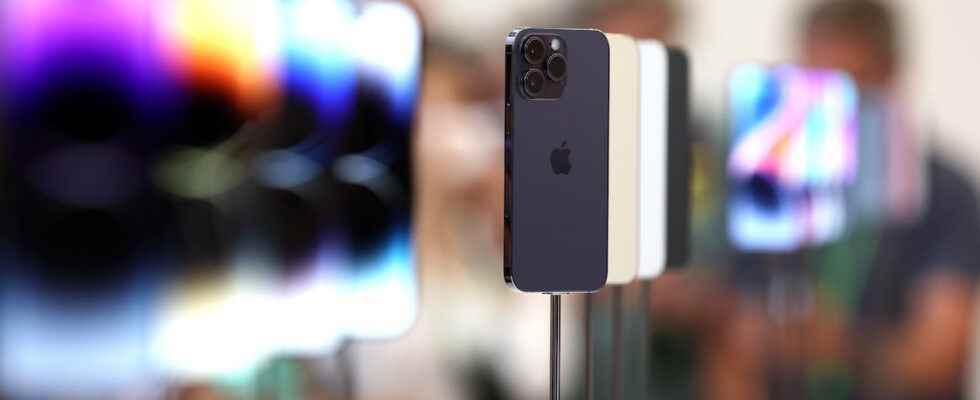If GPS receivers were once stand-alone devices, they are now integrated into the vast majority of our smartphones and other connected watches. This will also be the case in the range of iPhone 14 Pro / Pro Max smartphones, as well as in the Apple Watch Ultra, two types of devices presented last week by the apple brand. There is a major difference, however: the latter will integrate a “precision dual-frequency GPS”, like certain Android smartphones from manufacturers such as Xiaomi, OnePlus or Huawei.
As a reminder, GPS is the abbreviation of Global Positioning System, and it is the name given to the satellite navigation system owned and operated by the US government. Originally designed for military use, the system is now installed in the everyday life of the general public. The GPS system currently consists of a “constellation” of 31 operational satellites. Since the launch of the American system, China, Russia, the European Union, India and Japan have built their own GPS systems, respectively called BeiDou (35 operational satellites), GLONASS (22 satellites), Galileo (24 satellites ), NavIC (7 satellites) and QZSS (5 satellites).
Apple’s iPhones and Apple Watches operate GPS, GLONASS, Galileo, QZSS and BeiDou systems from the United States. But the range of iPhone 14 Pro/Pro Max smartphones, as well as the Apple Watch Ultra, innovate by offering a new system supporting two different frequency bands for better precision.
Increased precision
To understand what this means, let’s first remember that GPS satellites send signals at different frequencies, called bands. There are several bands that GPS satellites can transmit on, depending on the system. If the GPS uses the L1 frequency band, which is reliable and precise, this band has a big flaw: its signal does not pass very well through obstacles. Conversely, the L5 band, which will also be used by Apple’s system, proves to be more effective in eliminating many of the weaknesses associated with the L1 signal and adding the possibility of further signal processing to eliminate erroneous data.
By combining these two frequency bands, Apple could thus offer the most precise location data of the moment. This is what Apple promises to the lucky owners of its high-end iPhone 14 Pro / Pro Max, whose price is high, or the Apple Watch Ultra.
This will make GPS location data more accurate, where the L1 signal alone may be inaccurate. Still, Apple isn’t the first manufacturer to use this technology in its smartphones – the first device to use it was the Xiaomi Mi 8. This feature was included in 2018, and it’s now found in a number of smartphones. smartphones: the Xiaomi Mi 11, the Huawei Mate 40 Pro 5G and the OnePlus 10T 5G in particular.
Remember, however, that the L5 signal is currently only broadcast by 17 GPS satellites. The US government describes it as “pre-operational”. However, by combining the operational L1 signal with the pre-operational L5 signal, Apple will be able to allow future users of iPhone 14 Pro/Pro Max and Apple Watch Ultra to benefit from the advantages of the L5 while having the backup of the L1 system. . If this functionality may seem superfluous to a large number of users, it could well make the happiness of those who live in the most remote corners.
Apple iPhone 14 Pro – Best prices:
 LDLC
LDLC1329.00
Apple iPhone 14 Pro Max – Best prices:
 LDLC
LDLC1329.00
Apple Watch Series Ultra – Best prices:
 Darty
Darty999.00
 Cdiscount
Cdiscount999.00
 Baker
Baker999.00
 LDLC
LDLC999.00
 Fnac
Fnac999.00
 Amazon
Amazon999.00
Source: ZDNet.com
